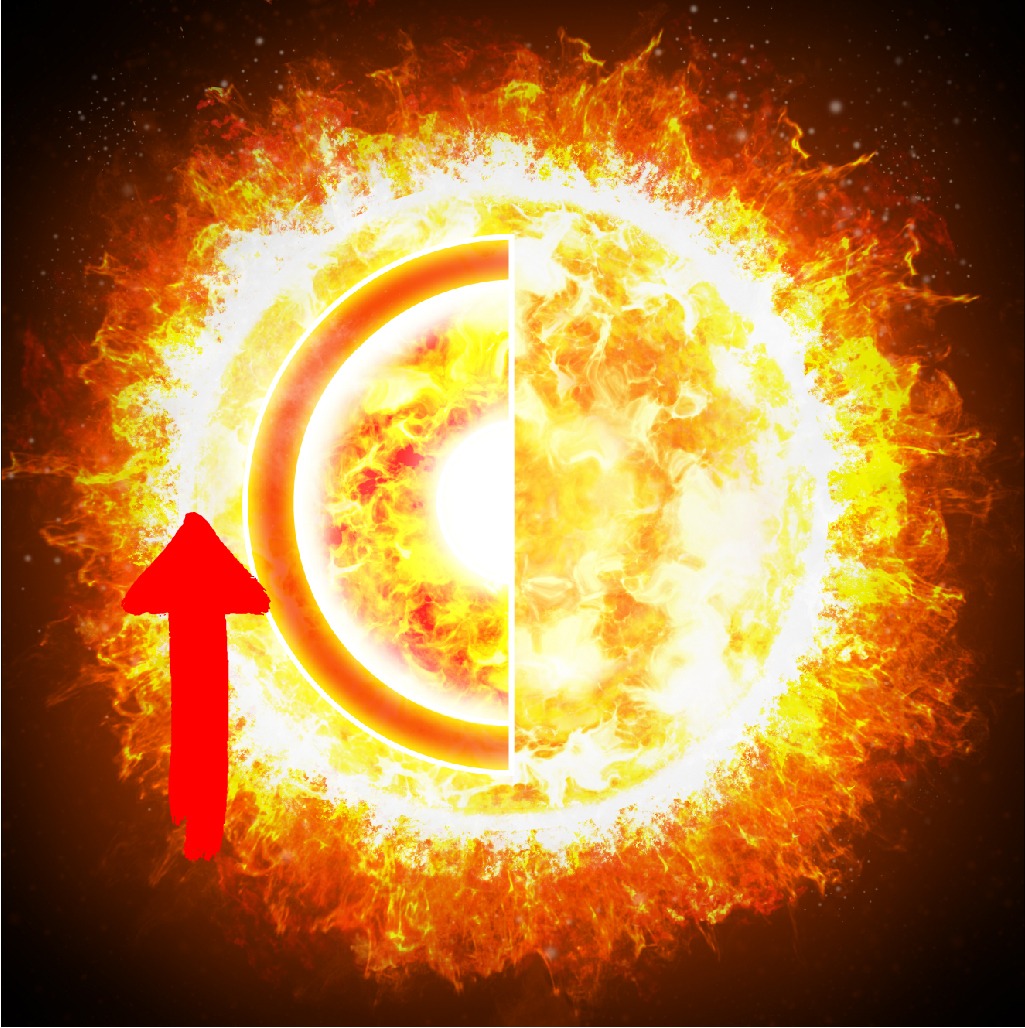

Cerenkov radiation radiation produced by particles traveling through a substance faster than light can chromosphere the layer in the solar atmosphere between the photosphere and the corona convective zone a layer in a star where energy is transported outward by means of convection also known as the convective envelope or convective zone core (of the Sun) the central quarter of the Sun's radius, in which hydrogen is fused into helium, releasing the energy that enables the Sun to shine corona the outermost layer of the Sun's atmosphere coronal hole a dark region of the Sun's inner corona as seen at X-ray wavelengths coronal mass ejection large volumes of high-energy gas released from the Sun's corona differential rotation the rotation of a nonrigid object in which parts at different latitudes or different radial distances move at different speeds filament a dark curve seen above the Sun's photosphere that is the top view of a solar prominence granule lightly colored convection features about 1000 km in diameter seen constantly in the solar photosphere helio-seismology the study of vibrations of the solar surface hydrogen fusion the thermonuclear fusion of hydrogen to produce helium hydrostatic equilibrium a balance between the wight of a layer in a star and the pressure that supports it limb (of the Sun) the apparent edge of the Sun as seen in the sky limb darkening the phenomenon whereby the Sun is darker near its limb than near the center of its disk magnetic dynamo a theory that explains phenomena of the solar cycle as a result of periodic winding and unwinding of the Sun's magnetic field in the solar atmosphere neutrino a subatomic particle, with no electric charge and little mass, that is important in many nuclear reactions and in supernovae photosphere the region in the solar atmosphere from which most of the visible light escapes into space plages a bright spot on the Sun believed to be associated with an emerging magnetic field plasma a hot, ionized gas positron an electron with a positive rather than negative electric charge an anti electron prominence Flamelike protrusion seen near the limb of the Sun and extending into the solar corona. When astronomers detect neutrinos from the Sun they are coming directly from the core and are the only direct core observations possible. Neutrinos have the ability to penetrate vast amounts of matter. What is a neutrino, and why are astronomers so interested in detecting neutrinos from the Sun? A neutrino is an almost massless particle that is produces by hydrogen fusion. Surrounding the radiative zone is the convective zone where huge updrafts of matter carry heat to the surface.

Surrounding the core is the radiative zone where energy from the core is moving upward by radiative transport. The hottest and densest part of the Sun is the core when hydrogen fusion is occurring. Describe the Sun's interior, including the main physical processes that occur at various levels within the Sun. The burning of a log is a chemical reaction, whereas hydrogen fusion is a nuclear reaction. This is incorrectly referred to as hydrogen burning because hydrogen is the fuel.

What is hydrogen fusion? This process is sometimes called "hydrogen fusing." How is hydrogen burning fundamentally unlike the burning of a log a in fireplace? Hydrogen fusion means the process of combining four hydrogen nuclei to form one helium nucleus. Only the Sun's core has this temperature. Why do thermonuclear reactions in the Sun take place only in its core? Thermonuclear reactions require a temperature of 10 million K.


 0 kommentar(er)
0 kommentar(er)
